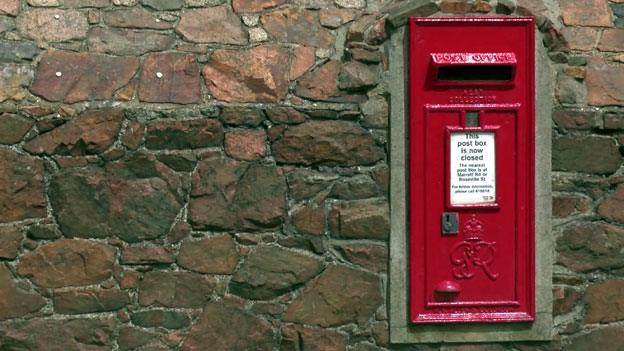Forensic tagging to help preserve UK's post boxes
- Published
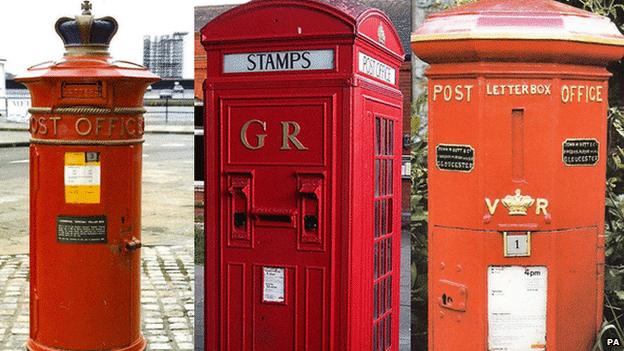
An 1860s special pillar box in Liverpool, a 1930s K4 telephone-post box in Whitley Bay and an 1850s octagonal pillar box in Sherborne (l-r)
Forensic tags and electronic tracking are among proposals set out by the Royal Mail and Historic England to preserve the country's post boxes.
There are some 85,000 boxes - the classic pillars and others mounted on walls or posts - across England, and about 115,300 in the UK.
Royal Mail has pledged to conserve them in their existing locations.
Forensic tags are invisible markers, usually liquids, which show up under ultra-violet light in cases of theft.
Permanent metal marking
The new commitments are contained in a joint policy document between Royal Mail and Historic England.
They update the original policy document from 2002 to recognise changes in legislation and allow for recent developments, such as painting 110 post boxes gold to celebrate London 2012 British Olympic and Paralympic champions.
New measures in the document include the use of forensic tags, permanent metal marking and electronic tracking to discourage the theft and damage of boxes.
Permanent metal marking and forensic tagging allows police to identify the origin of a post box if it sold as metal or as a post box.
The Royal Mail said the prevention of crime would "always be the primary objective" and it said every opportunity should be taken to identify areas potentially at high risk of crime and implement the new technology.
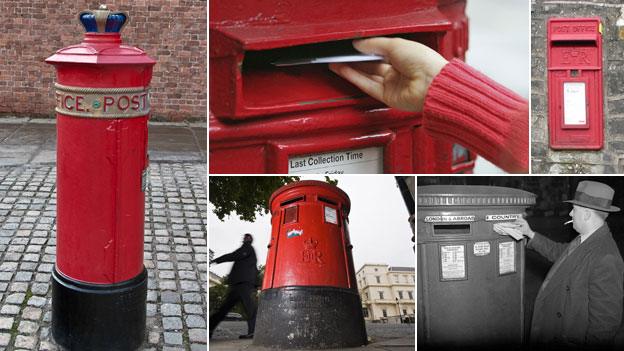
The design of post boxes has changed little since 1879
Historic England has also renewed its commitment to work with Royal Mail using heritage protection measures to ensure that post boxes are kept and well cared for wherever possible, the organisations said.
The agreement serves as a code and guide for Royal Mail staff responsible for managing the stock of post boxes.
It will be adapted to reflect the individualities of post boxes around the UK, Royal Mail said, with equivalent policies with heritage agencies in Scotland, Wales and Northern Ireland.
The Royal Mail already has a rolling maintenance programme of its post boxes to repair those which have fallen into disrepair or become shabby.
The post boxes tend to be repainted, on average, every few years, but this can change depending on if they are near to areas with more corrosive air, such as those near the sea.
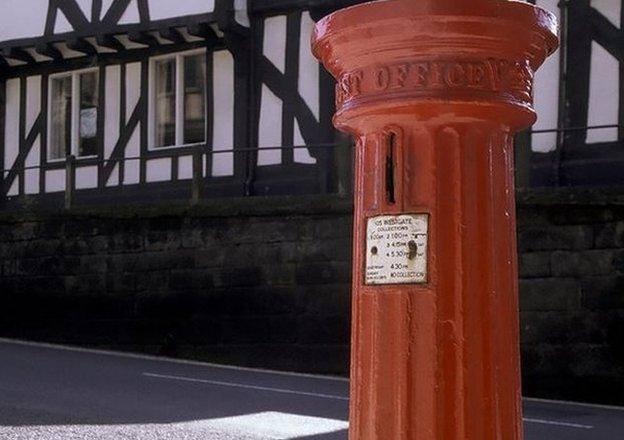
An 1850s fluted pillar box in Warwick
The roadside post box was introduced in Britain following the 1840 postal reform which provided for universal affordable postage, with the idea of a locked roadside box and regular collection times adopted from the continent by novelist and General Post Office official Anthony Trollope.
The first free-standing post boxes were installed in the Channel Islands in 1852 and in mainland Britain in 1853.
Unusual examples of the post box range from a Victorian wall box built into an edifice resembling a wayside shrine, to a 1930s "K4 Vermillion Giant" which combines a telephone kiosk, stamp vending machine and post box.
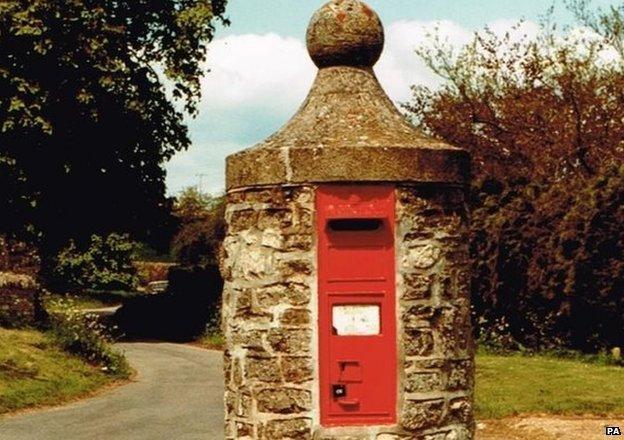
An 1870s pillar mounted wall box in Buckinghamshire
Sue Whalley, Royal Mail's chief operating officer, said there was a post box within half a mile of more than 98% of the population.
"Some post boxes are rarer than others and some have a very special place in our heritage. They are also an icon of the UK's postal system around the world," she said.
"We are proud of our much-loved post boxes and go to great lengths to maintain and repair them."

Britain's golden boxes
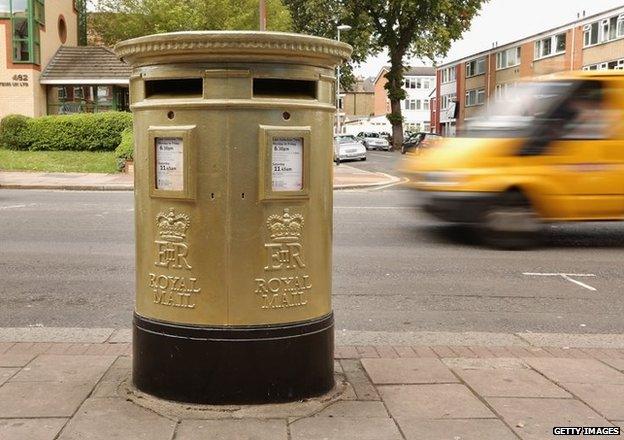
A box in Isleworth painted gold to mark one of British athlete Mo Farah's victories at the London Olympics
Among the 115,300 boxes Royal Mail is seeking to preserve are a select group of golden post boxes.
There are 110 post boxes painted gold to honour Great Britain's Olympic and Paralympic individual and team gold medal winners at the London 2012 Olympics.
They represent each gold medal won by an athlete or team, which is why some people have more than one post box in their honour.
Royal Mail has pledged to keep them gold permanently.
It maintains them as it does the rest of its network of post boxes, with repairs and maintenance being carried out on average every few years unless damage needs to be fixed immediately.
The type of paint they require depends on whether they are newer post boxes, made from stainless steel, or the older cast iron ones.

Duncan Wilson, chief executive of Historic England, said: "Post boxes are a cherished feature of British streets, adding character, colour and historic depth.
"Around 200 of the oldest and most rare are listed, but all are important to our heritage."

This post box in a Devon village suggests some receive more loving care than others
- Published24 April 2015

- Published18 January 2013
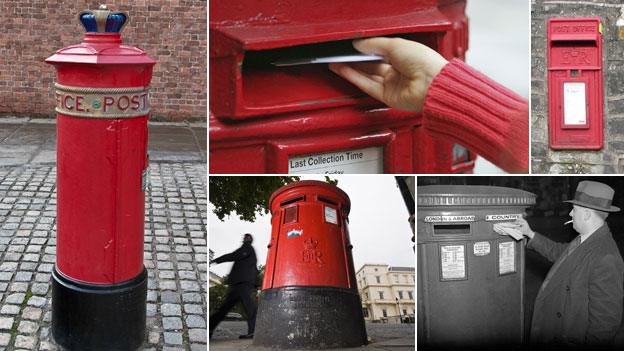
- Published29 April 2015
